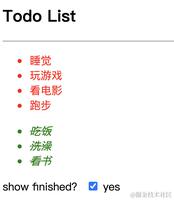django的ORM操作 增加和查询
ORM 对象关系映射
在数据库中,实现对数据的增删改查,使用的是SQ语句,
在django中,通过python代码,实现对数据库的增删改查,这就是ORM。
在python中,用类名 代表 django数据库的表名,
用对象 ,代表django数据库的一条记录,
ORM 就是封装了SQ语句,给对象进行增删改查,实现对数据库的操作,
在settings 文件中,默认了splite的数据库,自己可以修改
DATABASES = {
'default': {
'ENGINE': 'django.db.backends.sqlite3',
'NAME': os.path.join(BASE_DIR, 'db.sqlite3'),
}
}<br data-filtered="filtered"><br data-filtered="filtered">BASE_DIR 是代表当前的文件夹 settings,
django对数据库的迁移,只需要修改配置即可,
===
在model文件中,设计表,,
from django.db import models
# Create your models here.
#继承来自models ,
class Book(models.Model):
name = models.CharField(max_length=32)
price = models.IntegerField()
Date = models.DateField()
auth = models.CharField(max_length=32)
publish = models.CharField(max_length=32)
命令台执行命令。
python manage.py makemigrations
python manage.oy migrate
生成数据库表
在template ,写一个主页index.html文件,用于显示添加后书籍
{% load staticfiles %} # ------引用静态文件
<!DOCTYPE html>
<html lang="en">
<head>
<meta charset="UTF-8">
<title>Title</title>
<link rel="stylesheet" href="{% static '/bootstrap-3.3.7/dist/css/bootstrap.css/' %}" rel="external nofollow" > # ---导入bootstrap 文件
<style>
.container{
margin-top: 50px;
}
</style>
</head>
<body>
<div class="container">
<div class="row">
<div class="col-md-6 col-md-offset-2">
<a href="/addbook/" rel="external nofollow" ><button class="btn btn-primary">添加书籍</button></a>
<table class="table table-striped">
<tr>
<th>ID</th>
<th>书名</th>
<th>价格</th>
<th>出版日期</th>
<th>作者</th>
<th>出版社</th>
</tr>
{# <tr>#}
{# <td>1</td>#}
{# <td>水浒城</td>#}
{# <td>110</td>#}
{# <td>2011.1.1</td>#}
{##}
{# <td>egon</td>#}
{# <td>人民出版社</td>#}
{# </tr>#}
{# <tr>#}
{# <td>2</td>#}
{# <td>水浒城</td>#}
{# <td>110</td>#}
{# <td>2011.1.1</td>#}
{##}
{# <td>egon</td>#}
{# <td>人民出版社</td>#}
{# </tr>#}
{% for book in book_list %} #--从数据库取到的数据是一个QuerySet集合,进行for循环,遍历出每个对象,
<tr>
<td>{{ book.id }}</td> #---把每个对象的属性的值渲染出来,
<td>{{ book.name }}</td>
<td>{{ book.price }}</td>
<td>{{ book.Date }}</td>
<td>{{ book.auth }}</td>
<td>{{ book.publish }}</td>
</tr>
{% endfor %}
</table>
</div>
</div>
</div>
</body>
<script>
</script>
</html>
写一个addbook.html 文件,用于添加书籍,然后跳转到index页面
{% load staticfiles %}
<!DOCTYPE html>
<html lang="en">
<head>
<meta charset="UTF-8">
<title>Title</title>
<link rel="stylesheet" href="{% static '/bootstrap-3.3.7/dist/css/bootstrap.css/' %} " rel="external nofollow" >
<style>
.container{
margin-top: 50px;
}
</style>
</head>
<body>
<div class="container">
<div class="row">
<div class="col-md-6 col-md-offset-2">
{# {{ csrf-token }}#}
<form class=addbook" action="/addbook/" method="post">
{# 当点击添加按钮时,是执行视图函数,在数据库中添加一条记录,然后再把这个记录添加到index页面#}
<div class="form-group">
<label for="bookname">书名:</label>
<input type="text" class="form-control" id="bookname" name="bookname"> #---input 中的name属性,用于获取输入的值,
</div>
<div class="form-group">
<label for="price">价格:</label>
<input type="text" class="form-control" id="price" name="price"> #---input 中的name属性,用于获取输入的值,
</div>
<div class="form-group">
<label for="Date">日期:</label>
<input type="text" class="form-control" id="Date" name="Date"> #---input 中的name属性,用于获取输入的值,
</div>
<div class="form-group">
<label for="auth">作者:</label>
<input type="text" class="form-control" id="auth" name="auth"> #---input 中的name属性,用于获取输入的值,
</div>
<div class="form-group">
<label for="publish">出版社:</label>
<input type="text" class="form-control" id="publish" name="publish"> #---input 中的name属性,用于获取输入的值,
</div>
<input class="btn btn-info" type="submit" value='添加'>
</form>
</div>
</div>
</div>
</body>
</html>
在url文件中,匹配index页面和addbook页面的视图函数
from django.conf.urls import url
from django.contrib import admin
from app01 import views
urlpatterns = [
url(r'^admin/', admin.site.urls),
url(r'^index/$',views.index),
url(r'^addbook/$',views.addbook),
]
在views文件中,写逻辑代码。用户访问index页面,点击添加按钮,跳到addbook页面添加数据后,提交后,存到数据库,再从数据库拿到数据显示到index页面
步骤1,在index页面要显示数据库的信息,就要导入Book表,获取所有的数据,return render 进行渲染到页面展示
步骤2 ,addbook函数,从form表单中拿到添加的数据,从request里,以post的方法拿到,
存到数据库,用create方法,表名.objects .create(数据库的字段名= 表单中的name的属性名)
Book.objects.create(name = bookname,price = price, Date = Date, auth = auth , publish = publish)
左边的name 是models里的字段名,对应到form里取到的值,
from django.shortcuts import render,redirect
# Create your views here.
from app01.models import Book
def index(request):
#把数据库的数据嵌入到页面进行显示
#查询api,所有书籍
book_list = Book.objects.all() #数据类型是QuerySet:[book1,book2...]
return render(request,'index.html',locals())
def addbook(request):
#是form提交post的方法,
if request.method == 'POST':
#从form表单取数据
bookname = request.POST.get('bookname')
price = request.POST.get('price')
Date = request.POST.get('Date')
auth = request.POST.get('auth')
publish = request.POST.get('publish')
#把数据存到数据库,先把models 中的表引导到views文件
#方法1,左边的name 是models里的字段名,对应到form里取到的值,
Book.objects.create(name = bookname,price = price, Date = Date, auth = auth , publish = publish)
#存到数据库后要放到index页面,但现在是addbook页面,所以要跳转
return redirect('/index/')
return render(request,'addbook.html')
以上是 django的ORM操作 增加和查询 的全部内容, 来源链接: utcz.com/z/347978.html





